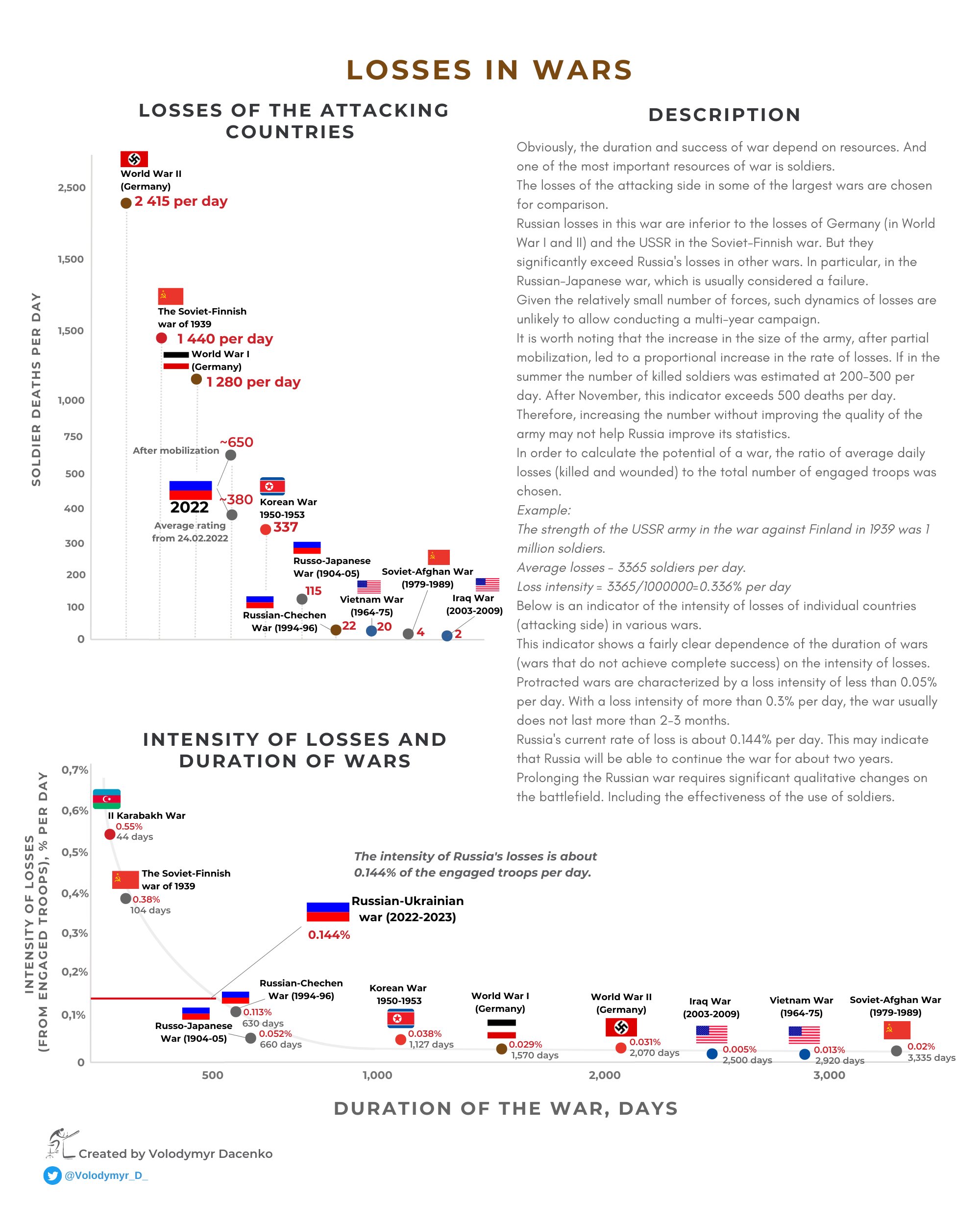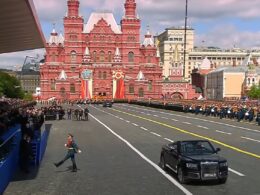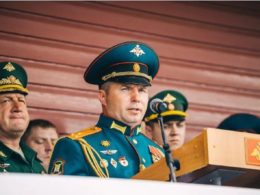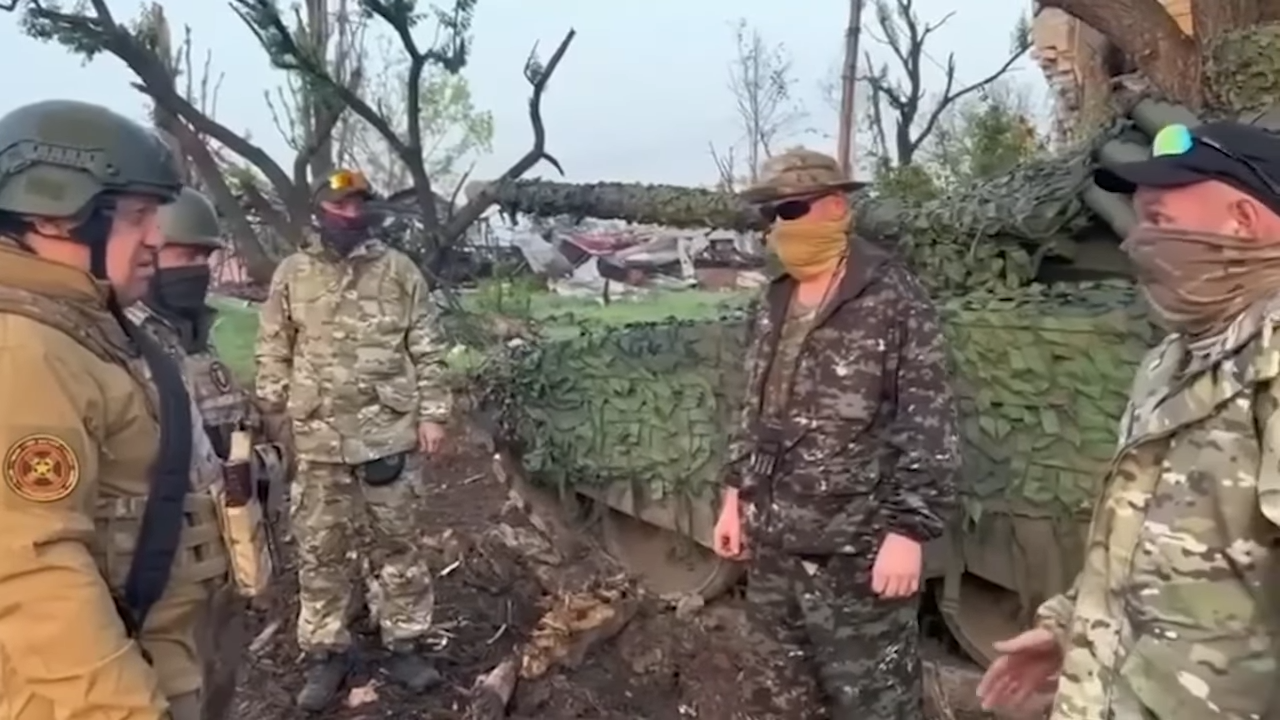| Germany | World War II | 2,415 KIA per day |
| USSR | Finnish War 1939 | 1,440 |
| Germany | World War I | 1,280 |
| Russia | Ukrainian War 2022-2023 | 380 (about 650 per day after mobilization) |
| North Korea | Korean War 1950 | 337 |
| Russia | Russian-Japanese War 1904 | 115 |
| Russia | First Chechen War 1994 | 22 |
| USA | War in Vietnam 1964-75 | 20 |
| USSR | Afghan War 1979-1989 | 4 |
| USA | Iraq War 2003-2009 | 2 |
"As we can see, Russia's daily losses are about 20 times greater than the US's losses in Vietnam and Russia's losses in the First Chechen War. Obviously, the duration and success of war depend on resources. And one of the most important resources of war is soldiers," Dacenko notes.Dacenko used the ratio of average daily losses (killed and wounded) to the total number of engaged troops to calculate a war's potential. For example, the strength of the USSR army in the war against Finland in 1939 was 1 million soldiers, the average losses were 3,365 soldiers per day, so the loss intensity amounted to 3,365/1,000,000=0.336% per day. He found that wars with a loss intensity of less than 0.05% per day tend to be protracted, while wars with a loss intensity of more than 0.3% per day usually do not last more than 2-3 months. Dacenko's infographics show the "intensity of losses" of the attacking countries in various wars: "This indicator shows a fairly clear dependence of the duration of wars (wars that do not achieve complete success) on the intensity of losses," he added:

"Given the relatively small number of forces, such dynamics of losses are unlikely to allow conducting a multi-year campaign," he notes.
Read also:"It is worth noting that the increase in the size of the army, after partial mobilization [in Russia that started in September 2023], led to a proportional increase in the rate of losses. If in the summer [2022], the number of killed soldiers was estimated at 200-300 per day. After November, this indicator exceeds 500 per day," Volodymyr Dacenko says.
- Russia’s cancelled WWII victory parades posed risks for exposing its losses in Ukraine – UK intel
- Heavy losses among Wagner group force Russia to deploy elite army units to storm Bakhmut – Ukrainian military
- Ukraine’s main task in Bakhmut is depleting Russian forces, inflicting heavy losses on them – Syrskyi
- Russia lost over 10,000 vehicles and pieces of heavy weaponry in Ukraine, Oryx says
- Alcohol abuse among leading causes of Russia’s non-combat casualties in Ukraine – UK intel
- Moscow sending women prisoners to fill depleted ranks of Russian forces in Ukraine, ‘Russia behind bars’ says
- Russia likely aims to develop alternative PMCs to replace Wagner – British intel





